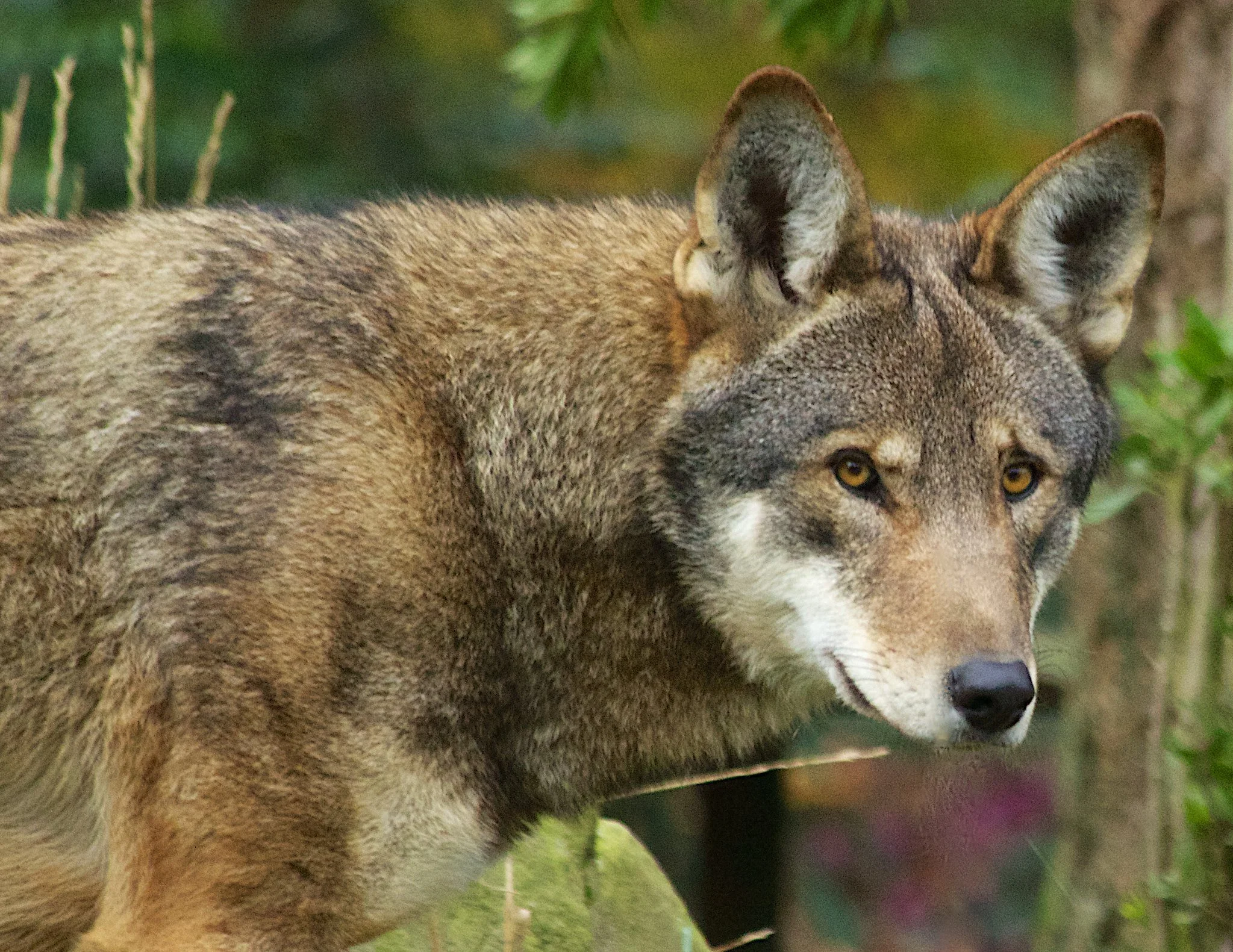📷 Red Wolf | B. Bartel / USFWS
As we delve deeper into our Refuges For Recovery campaign, we continue our celebration of the 50th anniversary of the Endangered Species Act. This week, our focus turns to the captivating story of the red wolves, a species teetering on the edge of extinction but still resiliently fighting for survival.
Red wolves desperately require your help at this moment. This remarkable species, known for its intelligence and stunning beauty, plays a vital role as an apex predator in its ecosystem. Protecting red wolves is crucial for maintaining a balanced and healthy environment. The survival of this species is in grave danger, and they are on the verge of extinction. The U.S. Fish and Wildlife Service (USFWS) reports that fewer than 25 red wolves remain. We must take immediate action to save them before it's too late.
Historic range of the Red Wolf | USFWS
The conservation of red wolves has been an ongoing initiative for over 40 years due to the many threats affecting their population. Before their endangered species listing, red wolves used to roam freely across the southeastern United States, covering the Atlantic and Gulf Coasts, central Pennsylvania, and even extending west to central Texas, southeast Missouri, and the Ohio River Valley. By the late 1970s, the range of red wolves had been reduced to coastal prairies and marsh habitats in southeast Texas and Louisiana due to habitat loss, predator control programs, illegal killings, and hybridization with coyotes.
Conservation for red wolves began in the early 1970s after their population range had drastically declined. USFWS implemented the Red Wolf Recovery Program in the 1970s and began trapping red wolves within the area to prevent further population extinction. In partnership with Point Defiance Zoo and Aquarium, they initiated a captive breeding program with 14 red wolves. Sadly, the Red Wolf population declined further due to human-wildlife conflict and other damaging threats. In 1980, the Red Wolf was declared extinct in the wild, with only a few left in captivity.
Captive Red Wolf pup | Ryan Nordsven / USFWS
Despite the unfortunate decline in the population of red wolves, there was a ray of hope when the Alligator River National Wildlife Refuge in North Carolina released 4 captive pairs of red wolves into the wild, which resulted in a population of about 130 red wolves in 2006. Although the breeding program was successful, the population declined again in 2014, resulting in the species being listed as endangered. According to the most recent data, USFWS estimated that only 21 to 23 red wolves are remaining, most likely within eastern North Carolina. It is crucial to continue efforts to conserve the habitat and population of this magnificent species.
The National Wildlife Refuge System (Refuge System) plays a crucial role in supporting the conservation and monitoring of the Red Wolf population. Given that red wolves frequent many different habitat types, refuges are a prime spot for red wolves to seek shelter in restored habitats without fear or disturbance by humans. Red wolves also utilize national wildlife refuges to seek and gather natural resources for their survival and as a place to breed and raise their pups - the Alligator River NWR in North Carolina is an example. In addition to Alligator River NWR, St Vincent NWR in Florida and Pocosin Lakes NWR in North Carolina also support the protection of red wolves with breeding pairs finding homes on the refuges.
Wild Red Wolf on Alligator River National Wildlife Refuge, North Carolina | L. Serrano / USFWS
Pocosin Lakes NWR is also home to the Red Wolf Education and Health Care Facility (Red Wolf Center). This public education center highlights and oversees the red wolves within the Coastal North Carolina National Wildlife Refuges Complex. With support from the National Wildlife Refuge Association, Coastal Wildlife Refuge Society (the local Refuge Friends group), and other essential partners, a beautiful Red Wolf mural was painted on the outside of the Red Wolf Center to showcase the endangered species further. If you want to see the mural, please check out our video of the Red Wolf Center mural below.
Predatory species like the Red Wolf are essential for a fully functional ecosystem. They help regulate prey populations, preventing overgrazing and preserving plant communities. In turn, this maintains the quality of habitats for various wildlife and fosters biodiversity. Red wolves, for instance, help control the population of small mammals and deer, which can otherwise have detrimental effects on their shared habitat. Their presence acts as a natural mechanism that ensures the overall well-being of the ecosystem they inhabit.
To further protect and restore this incredible species, we ask you to support our efforts today during our Refuges for Recovery campaign. The National Wildlife Refuge Association needs support through generous donations to continue our work protecting wildlife, like endangered and threatened species, such as the red wolves. In defending refuges, we are protecting the home of the Red Wolf, where they can thrive for generations to come. The Red Wolf population and other endangered species can only flourish with your support when you donate to the National Wildlife Refuge Association today.

